Vintage Clothes and Music
How Dawn Johnson and Rob Vasquez traded security for creative freedom in ’90s Seattle
Art is good therapy. I was compelled to sing, draw, and put on plays from a young age.
My dream as a young woman was to be an art teacher, but I didn’t want to go to school for seven years, so in 1987, I opened a vintage store with my boyfriend at the time, Rob Vasquez. We called it The Hideout.
Rob and I met at the Emerald City Flea Market on First and Pike, where Rob ran his record store, Record City. On our regular hunts for vintage clothing around Seattle, my sisters Sasha and Eden and I started hanging out at Record City. Sasha even worked there on Saturdays so Rob could go thrift for more records.
Rob played guitar in the Nights and Days, and Sasha and I thought we were the official go-go dancers for the band. We stood up front at shows and danced and danced.
The Hideout sat underneath a Supercuts on E. Denny Way in Seattle’s Capitol Hill, right up the street from Fallout Records and Skateboards, where Tom Price from the U-Men worked. When we signed the lease, I was 17 and in an alternative high school. Rob was 32. Rob lived in the back of the store.
The Night and Days played for our opening night party. We had a lot of dance parties there, and Rob DJ’d, since he had such a great record collection. The Hideout closed in 1989 when my Oma took the family back to visit East Germany for two months, so I couldn’t afford my half of the $450 a month rent.
My sisters Eden and Sasha and I started our first band, the She Devils in 1988. We sang, Rob played the Farfisa organ and bass, and Dave Holmes played guitar and Dan Ryan played the drums. It fizzled out after Eden got mugged in front of the practice space, the Blue Room. We shared it with Rob’s other band the Night Kings. It was next door to the Comet Tavern—the bar that Gits’ singer Mia Zapata left the night she got murdered. Capitol hill was popular but sketchy back then.
After the She Devils dissolved, Rob and I went on to play in our band Gorls, together, and then Man Tee Mans and Chintz Devils.
Rob and I continued to sell vintage stuff at our shop and at flea markets after The Hideout closed, and we also had a space in the Fremont Antique Mall. We got by.
I had a lot of energy back then. I had two jobs, working minimum wage, and then running the business with Rob. Thankfully, I also worked at my mom’s espresso cart, Caffe Carretto, on MLK and Union. Income from that cart is what kept our antique business going.
My mom had owned Wildrose, which was a lesbian bar she had started with four other women. This was the first lesbian bar in Seattle, and it’s still open. One of the women bought everyone else out, so my mom and her partner Candy opened the espresso cart in 1989. Everyone in my family worked there for like 12 years.
Rob made his money selling things at the flea markets and our antique mall space. You could do that back then. In the 1980s, rent was cheap in Seattle. While he played music, he lived off antiques, and from buying and selling records and watches and all kinds of cool things. He still has a collection of records, vintage record players, guitars, and lots of toys.
When our daughter Madeleine was born in December 1996, we moved into a house a block from the espresso cart. Rob stayed at home, took care of Madeleine, and worked on his bicycles. He had these cool Schwinn low-rider bicycles in our living room. He could just walk Madeleine down to the cart so I could nurse her when she was hungry.
Grunge had taken over the cool little Seattle music scene, and everybody was selling out to the man.
Our band The Gorls got a few letters from record labels in the mail, due to a great review in Maximum Rocknroll, but we wanted to do it on our own, so we started Dope Records and Gurp Magazine in 1993. On Dope, we put out a Flathead/Gorls split 45 and the Man Tee Man’s only 45.
Gurp magazine was meant to give the fans some insight into our groovy world. Everybody promised to help make the magazine, but I wound up doing those issues all by myself. I put out three issues.
Most of the shows Gorls, Chintz Devils, and Man Tee Mans played were in Seattle at small clubs, dive bars, or house parties. Those were the most fun. But in 1996, the Chintz Devils did drive across the country on a short tour.
I was playing drums and seven months pregnant with Madeleine when we played with the Demolition Doll Rods in Detroit.
We had met them a year earlier at Jimmy the Bud Man’s house. He ran Bag of Hammers records, which Rob and I were both on. That night we played together at the Ren de Vous. The Demolition Doll Rods were a killer, almost-naked band featuring Dan Kroha from The Gories, Margaret Doll Rod, and her sister Christine. They wore only G-strings and covered their nipples with duct tape and small mirrors. I was sitting up front, very close to the stage in the Ren de Vous, when Dan’s rock moves came very close to my face. We bonded over health food and a shared appreciation of music. So, this was a dream come true to head to Detroit. After the Detroit show, Margaret made me Miso soup.
On that tour, we also played Cincinnati, Ohio to see a friend Jim Sonnenberg. He put out a cool magazine named Bad Vibe.
Jim booked us a show at a local dive bar that was sparsely attended. The only guy there other than Jim was a guy with a mullet that loved us.
Jim made a split 45 with The Gorls and a loud band called Von Elmo that was meant to go with an issue of Bad Vibe, but he never finished the issue, so he never released the record. I do not even have a copy.
Next stop was hot and muggy Chicago. We played a show at a cool art gallery and stayed with a friend of Jim’s. I had a great pregnancy and really felt fine, but folks thought it was strange to see me playing drums. A couple guys at the show had a bet going on how pregnant I was.
Our 1970 VW van only broke down once that tour: It was along the freeway in Prairie Home, Idaho. We waited a bit, but no one stopped, not even a cop, so Rob walked into town and found a repair shop. A wire had come loose from the alternator. It was a quick fix, and we got back on the road again.
When we didn’t have places to stay, we slept at rest stops, which was fine because we had a fold-down bed. Unfortunately, Jonathan had to sleep on the cot over the front seat with his feet out the window.
After the Gorls ended, I met these guys named Chad Smith (drums), Brian Horst (bass), and Dave Horner (guitar) at a party through Mike Goodall, who had started Regal Select Records. The guys were looking for a singer. I spent two and half months in what became The Dobermans. We cowrote a lot of songs and we played at a lot of parties and shows. The Dobermans went on without me and released the song “Planet Vator” on a 10” record a few months after that. When the Man Tee Mans played its first gig at The Vogue on 1st Ave, the guys were pissed that we also played “Planet Vator.” But in many of my bands, I kept playing the songs I needed to keep singing.
In the summer of 1997, The Man Tee Mans did a West Coast Tour with Flathead. They were our fav band to play with, and their singer and guitarist Dylan Maiden is Rob’s nephew. Eden Johnson played bass during that time. Our baby Madeleine was also on the tour. She was six-month-old, so we stayed with family and friends.
We played in San Francisco with an awful band. The singer puked in a bag and lit his hair on fire. Hardly anyone came to the show except a guy from the Phantom Surfers. I believe he let us borrow an amp since we might have been sharing equipment with Flathead, and they weren’t on this bill. We made $50.
We were staying with my Oma in Redwood City. Oma was watching, and when we got home from the show, she was waiting on the front lawn and was worried something had happened to us in the city. Shows just run late.
The next stop was San Diego, where we stayed at our buddy Skip’s mom’s yoga studio. I had met Skip at my Seattle espresso cart. He was a cool surfer guy living in his van. There we played The Casbah, which was a dream spot, except it was under the airport’s flight path and was very loud.
Madeleine was with us at the show, and Flathead bassist Dan Wood watched her while we played. I had managed to get her to sleep, but the planes kept waking her up. It was the Man Tee Mans’ last show ever. We got pretty paid well: $150. I think they felt sorry for us because we had a baby.
A few years later, in the summer of ’98, Rob and my relationship had run its course, and we split up. My uncle gave me a 1974 Mercedes Benz 450 SEL, and I decided to try to make it on my own, so I had to break up the bands with Rob, too.
Rob took care of Madeleine so I could work. We got along well after we spilt, and I still kept making art when I could.
When Madeleine was little, I used to do a lot of art with her. I even had a few bands with her. We only played one show. It was a house party. Betsy Hanson and Johny Samra were in the band. We made a few short super 8 movies, too. The one we called “The Cupid Movie” played at the Northwest Film Festival during the local Sighting Festival in 2010. It was easier to do any projects with her involved, and as a mom, she was my world, which was the best. It’s not easy being a single parent. You’ve got to stop and smell the flowers to be a good parent.
I may never have become an art teacher, but I spent my time making a lot of visual and musical art. And I still make music and art when I am inspired.
Right now, I’m going through what I made. I just gave my daughter the last pieces of my ’60s clothing collection, including a pair of pink, Peter Max bell bottom jeans with a fruit print, a Rudy Gernreicht black wool minidress, and a silver cutout dress, and she will wear it.
The vintage resell business is tough, but for those 20 years, I was in thrift shops and at yard sales at least three days of the week, every weekend. I eventually started to get grossed out by the filth in them: rat droppings, urine. My vintage clothing collection from the 1900-40s started decomposing—literally falling past in my hands. The silk breaks down due to metals in the dye. I had started selling more furniture, too, which was daunting due to an already bad back and being so petite. Vintage clothing resale had also gotten competitive, and after the Levi Jean mania, it got expensive. So I went to beauty school in 2002, and I’ve worked as a stylist for 15 years at Rudy’s Barbershop, until I hurt my knee recently. Then I went back to working in retail.
Seattle got expensive, too, of course. Now the traffic is intense. It’s hard to drive anywhere, or even around the neighborhood. Finding parking is tough. Going to shows is tough too. They are too late at night. But I’m still here for now. Like most people when they think of their youth, I have rose-colored glasses, and I am happy about the choices I made. After all these years the songs will be haunting me playing in my head:
“Revving and riding, Boozing and brawling, Screaming and a hollering, Just a she devil, just a she devil, just a she devil that’s me…”






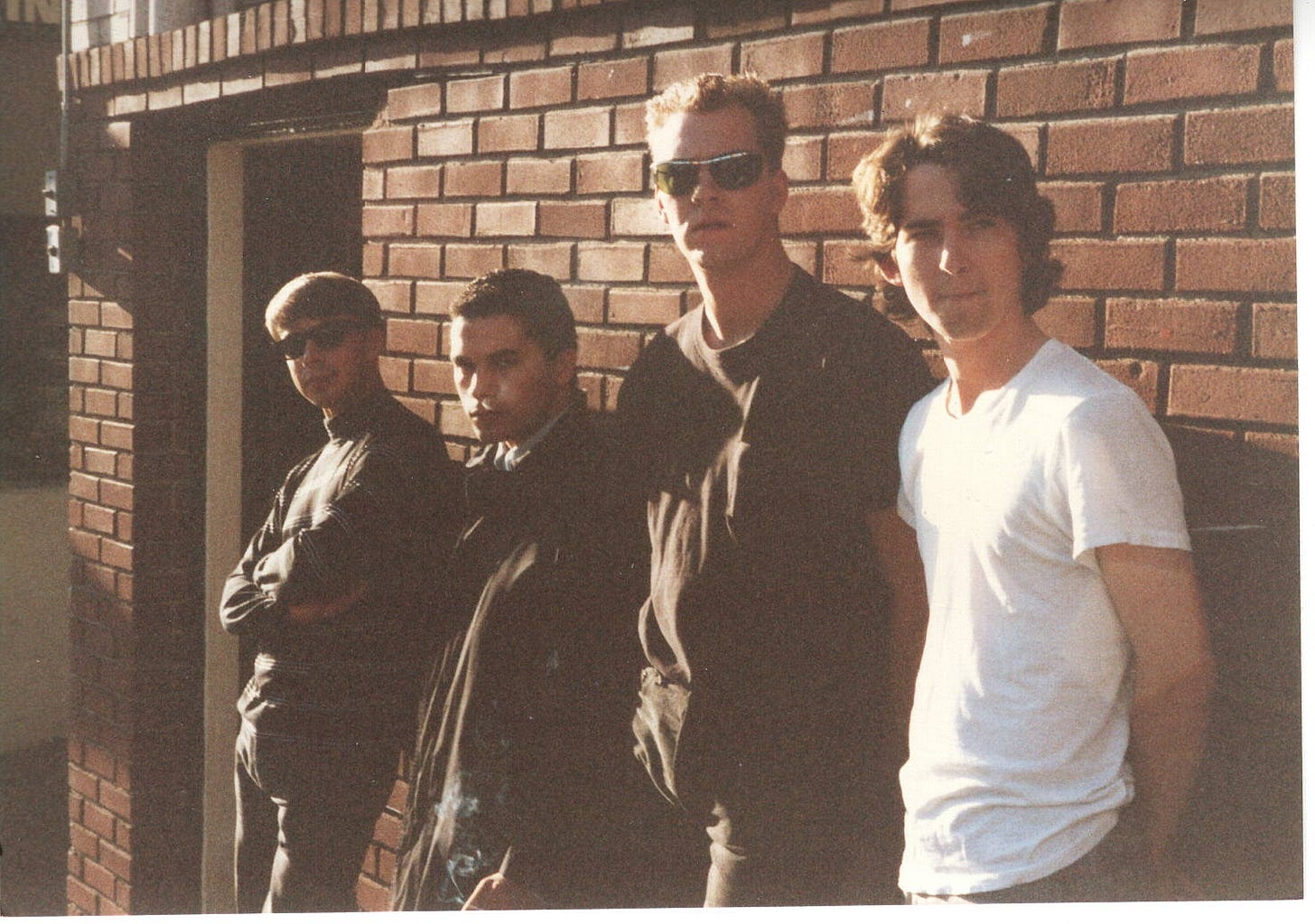

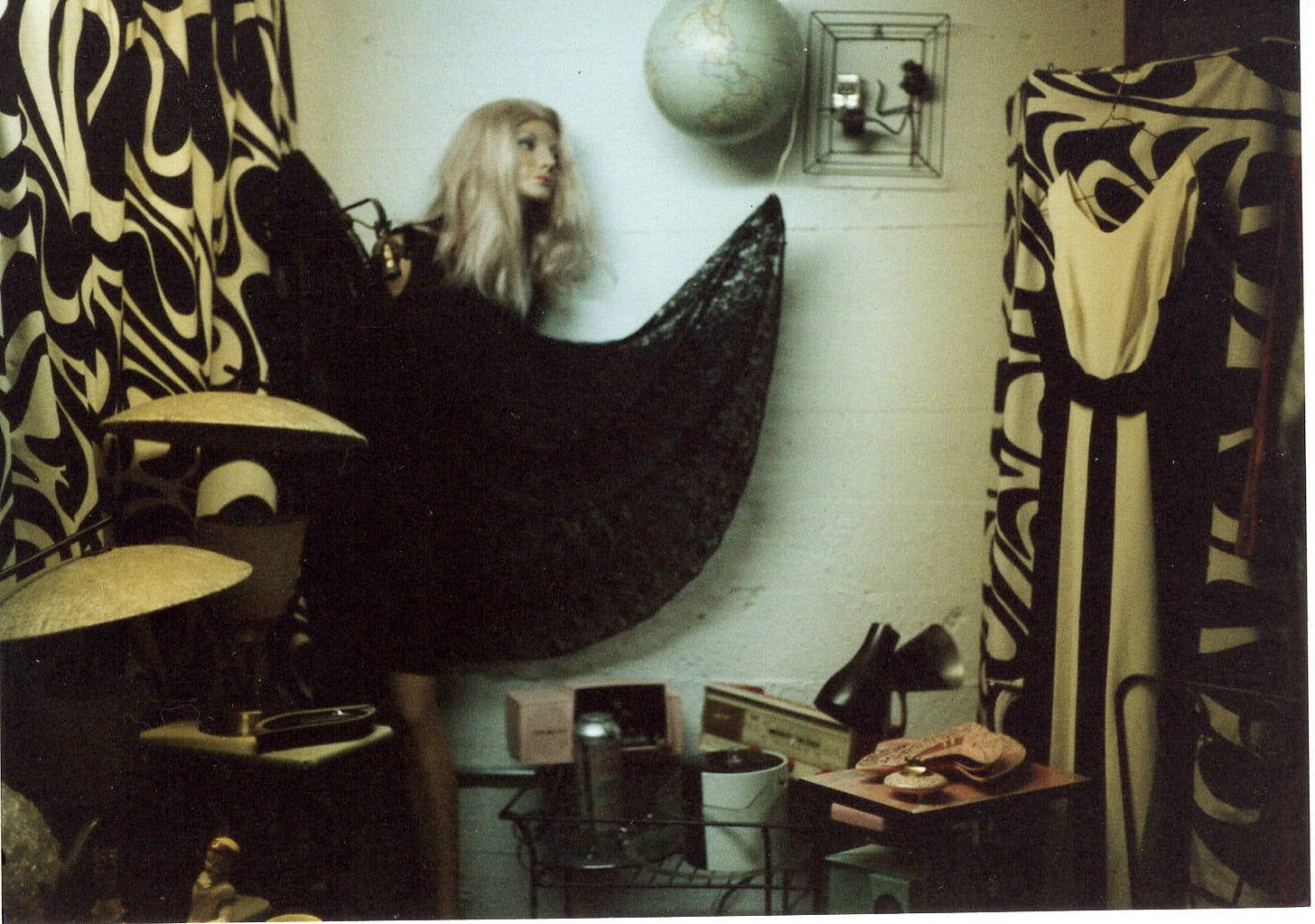
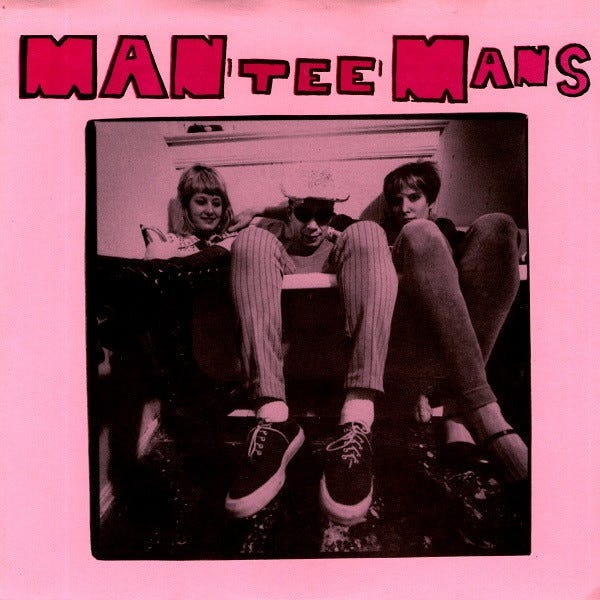

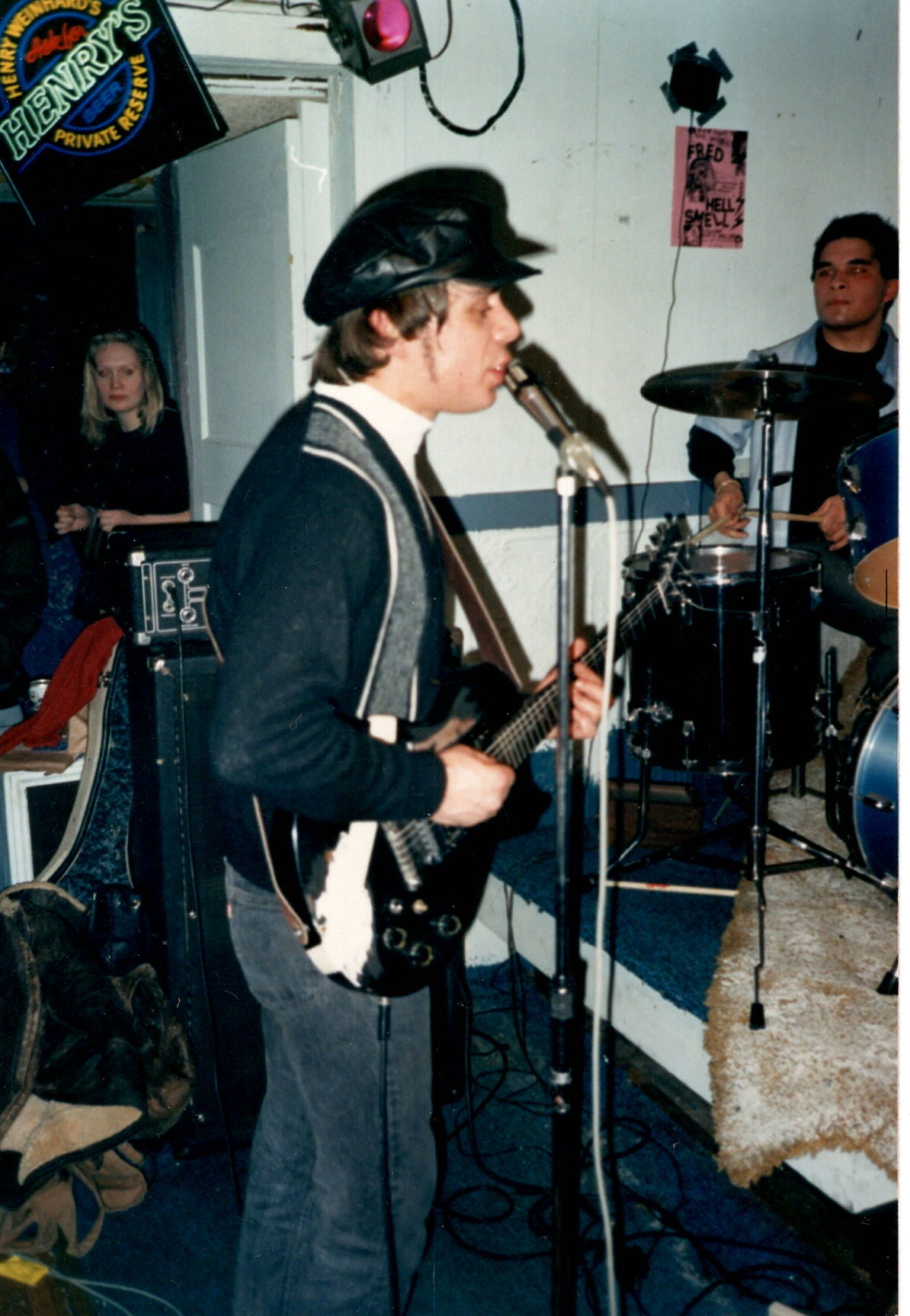
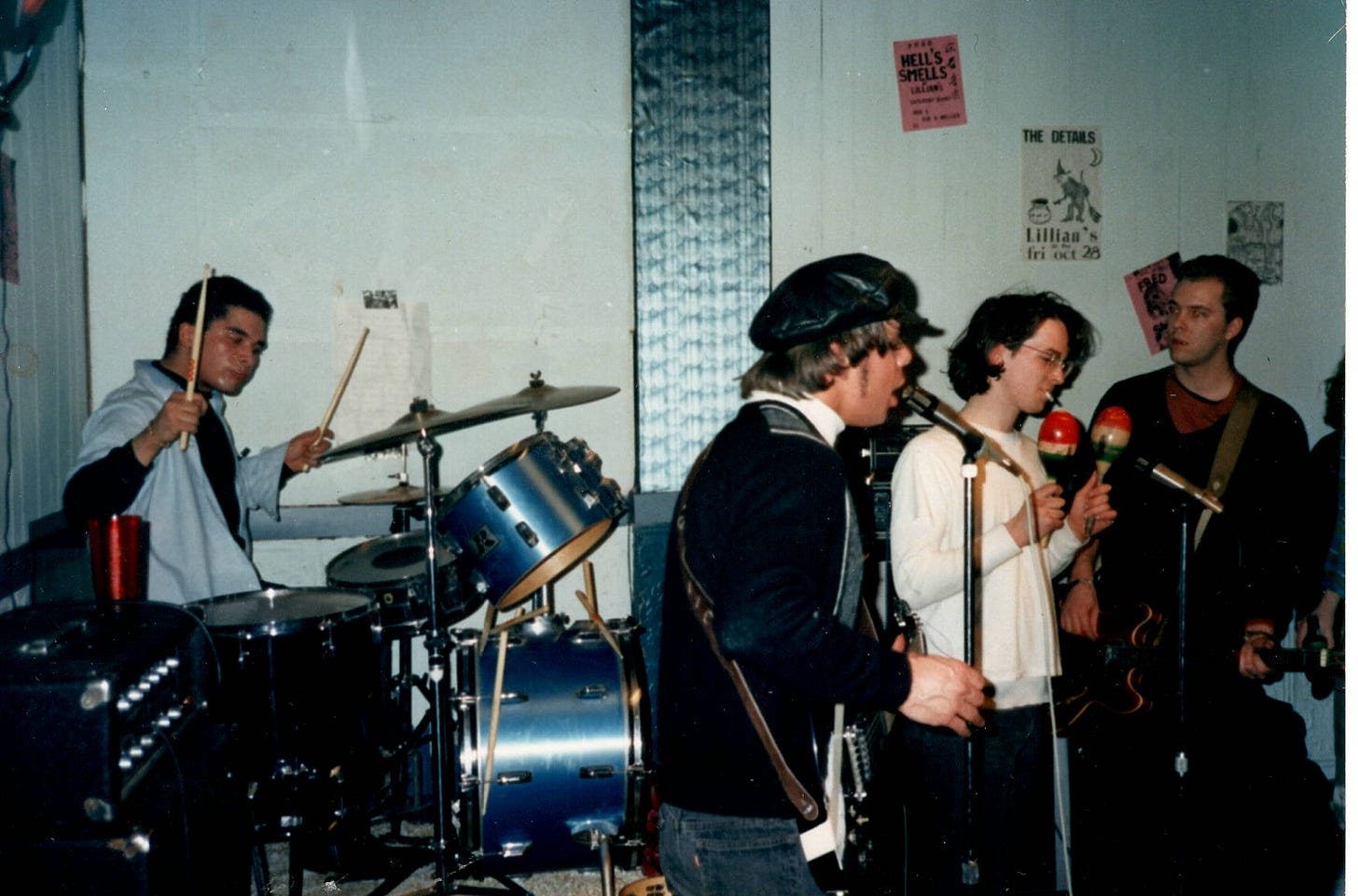
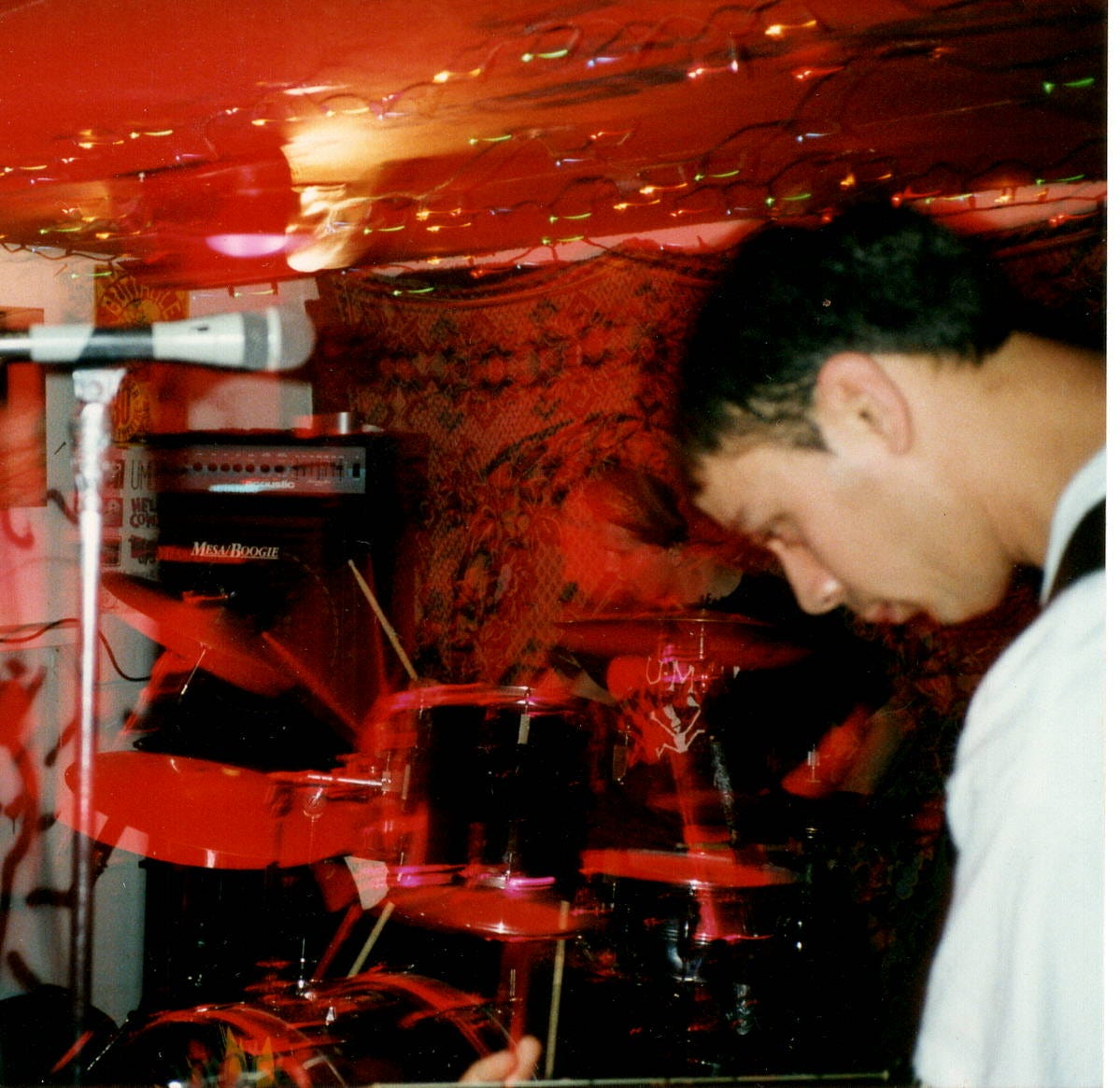

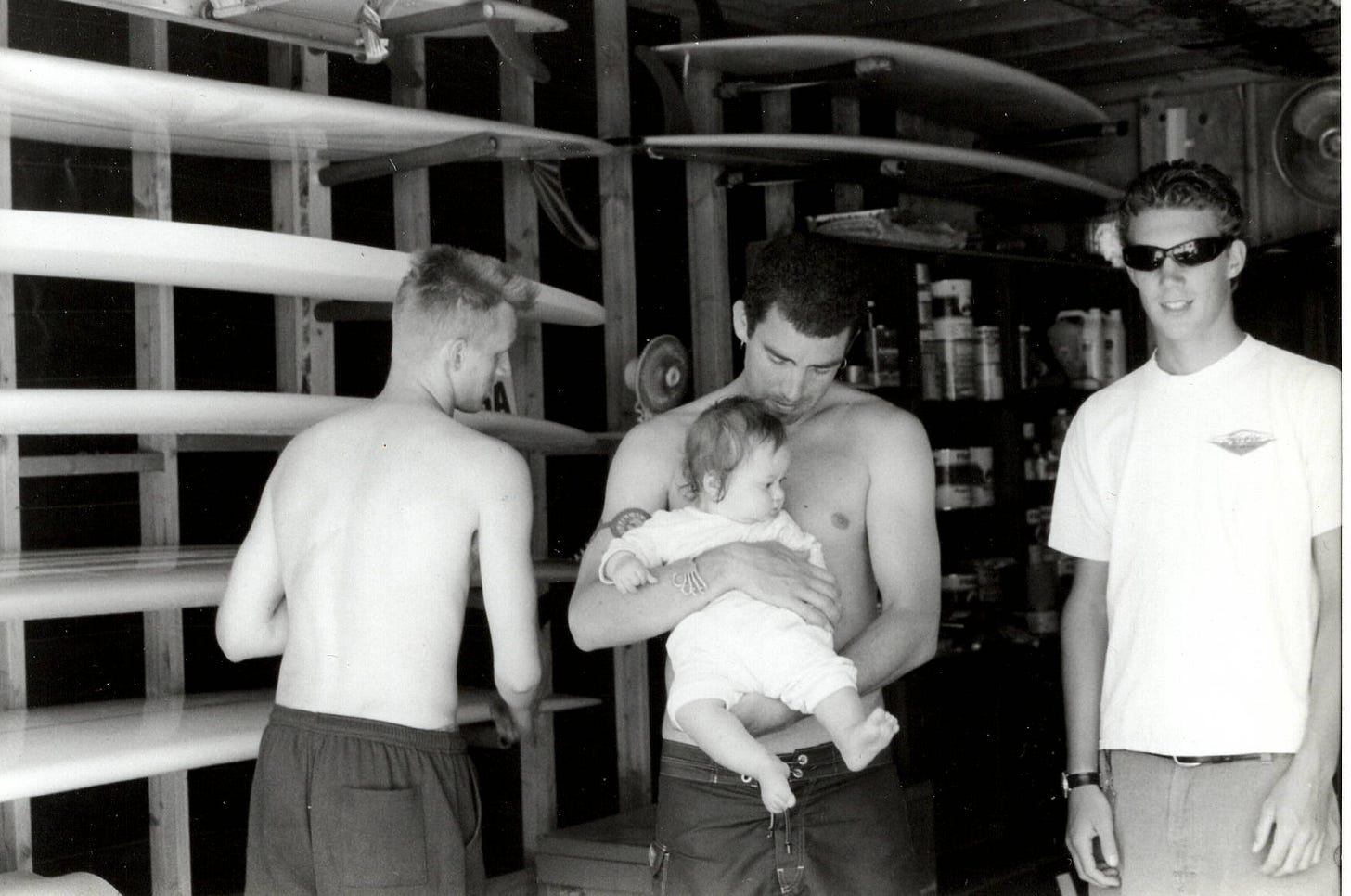
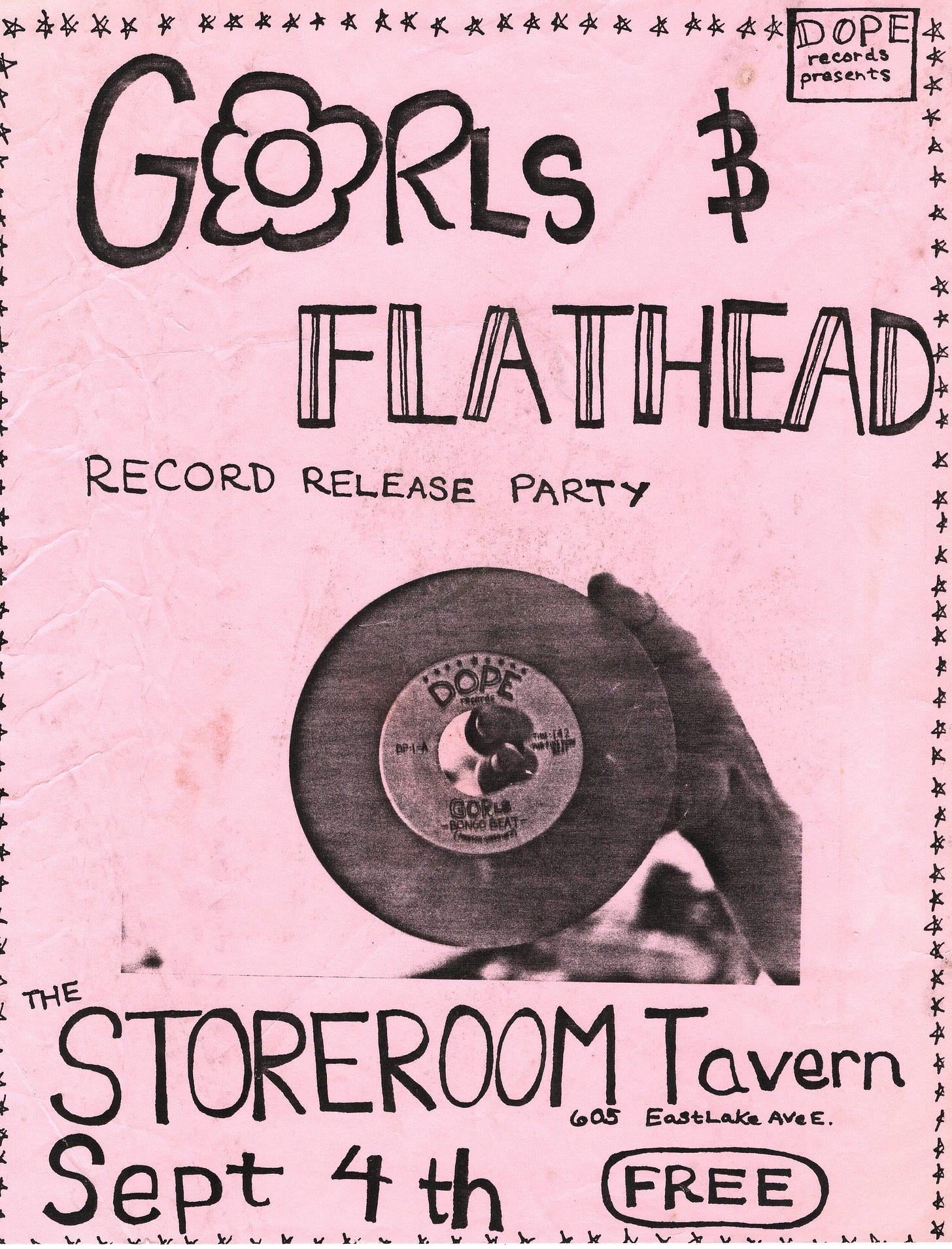
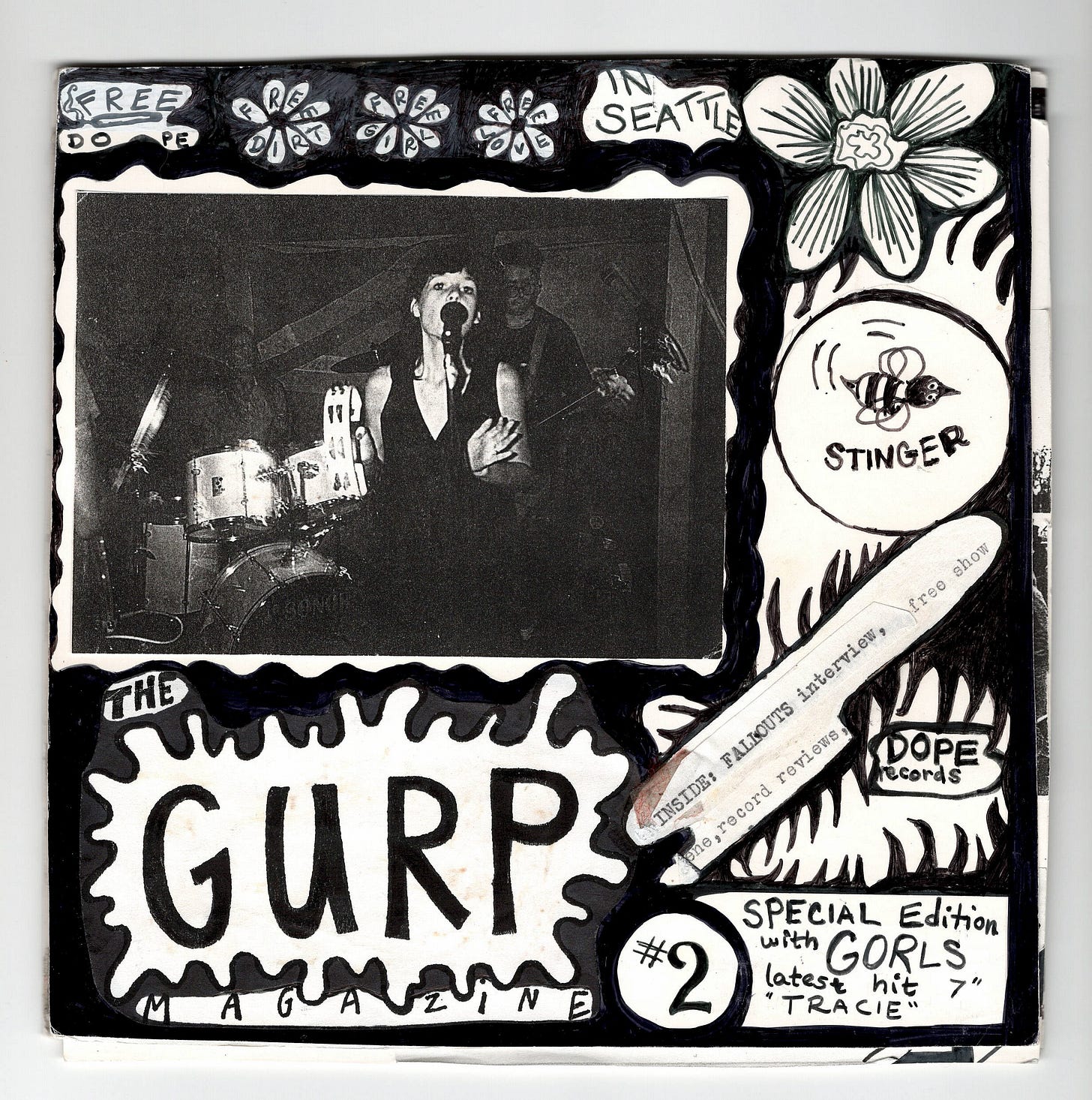


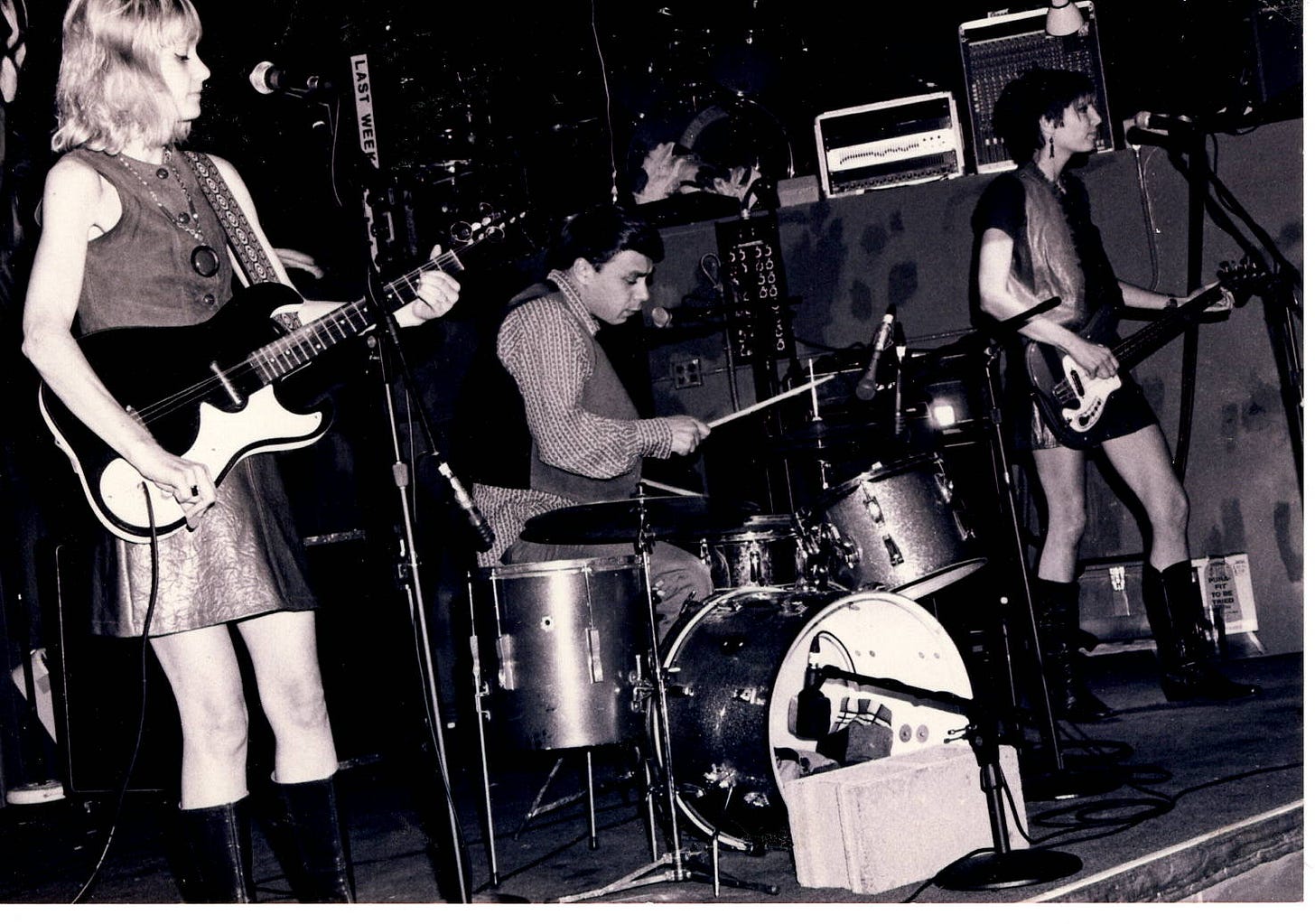
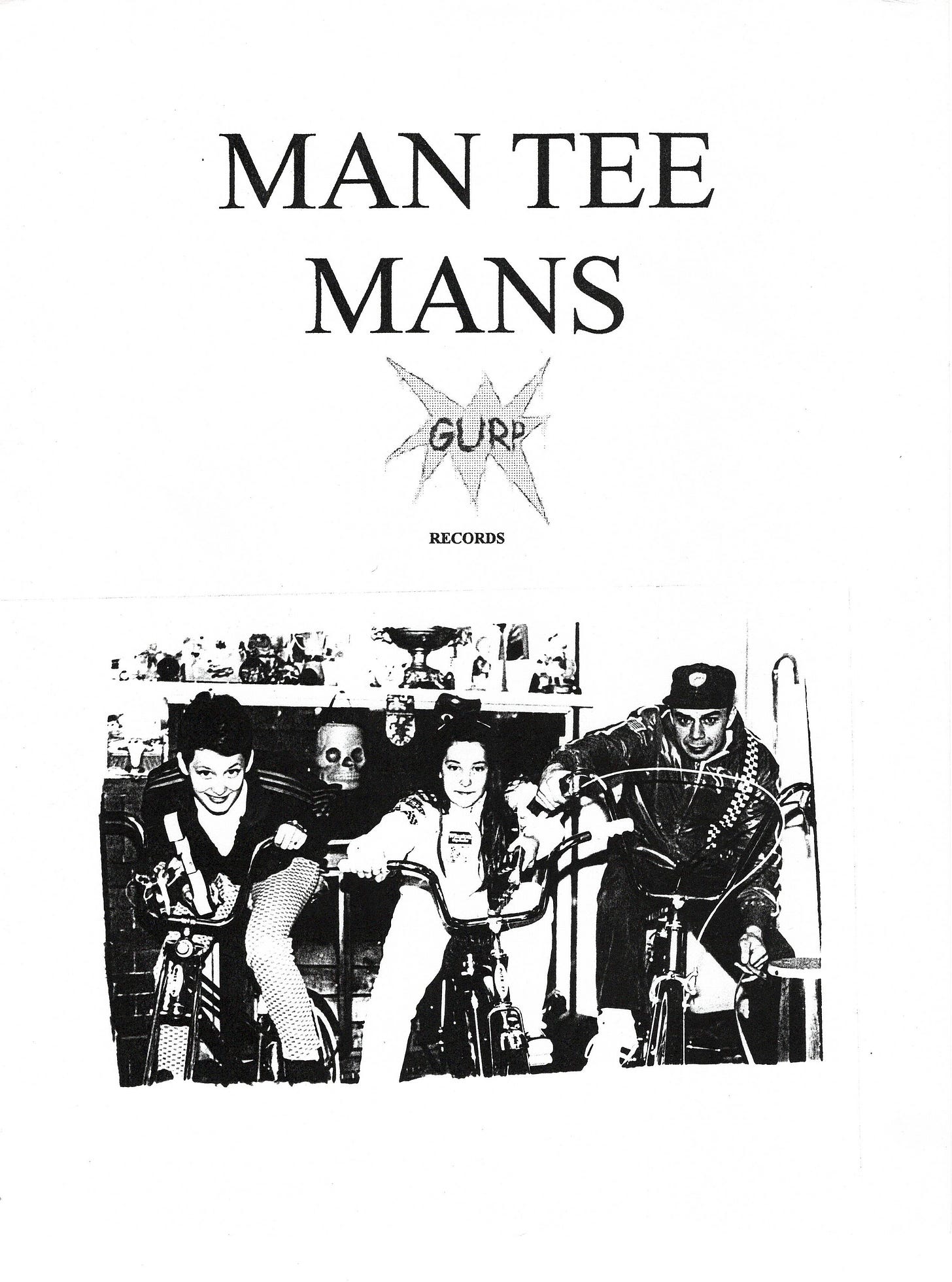

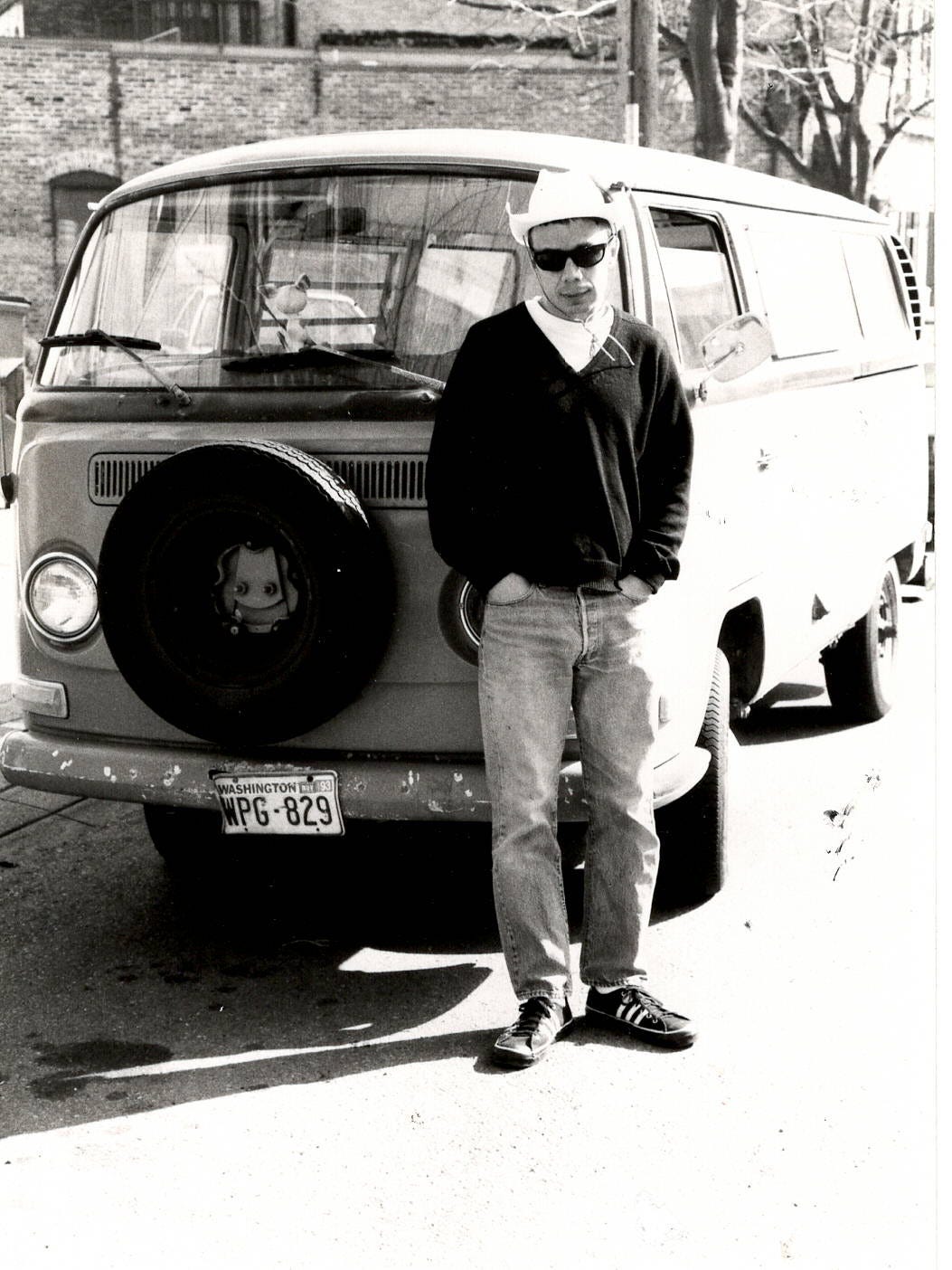


I saw the She Devils in December 1988 at the Oasis in San Francisco. Did you cut the album you talked about that day? You were the openers for Concrete Blonde. It's still one of the best shows I've ever seen.
Aaah! Demolition Doll Rods, Guitar Wolf, garage rock. I was in the scene in Texas and would have loved your bands and shop. I had those black swirly curtains and, if you can believe it, that dress! It was actually pants.. I tailored it short and wore it while on tour. I may have even worn it at a show in Seattle! Tiny world. Thanks for writing.